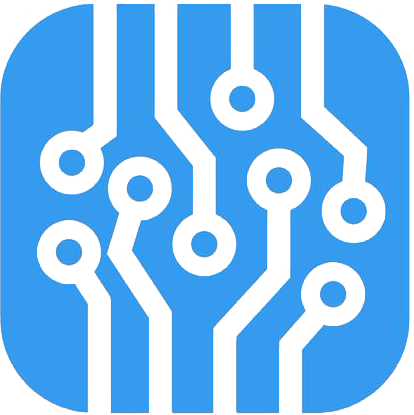Cadence PCB設(shè)計(jì)高級(jí)
-
 課程目標(biāo)
課程目標(biāo)
高速PCB設(shè)計(jì)的潮流已經(jīng)滾滾而來(lái),如何預(yù)防PCB板上出現(xiàn)的信號(hào)反射、串?dāng)_、電源/地平面干擾、時(shí)序匹配以及電磁兼容性等一系列新問(wèn)題好象突然間擋在了您的面前。如何應(yīng)對(duì)新的設(shè)計(jì)挑戰(zhàn)?Cadence培訓(xùn)高級(jí)班將首先讓您了解這些問(wèn)題產(chǎn)生的機(jī)理,并掌握其解決方法;然后講解并上機(jī)練習(xí)Cadence的高速 PCB設(shè)計(jì)與仿真工具SPECCTRAQuest的使用。使您在硬件設(shè)計(jì)過(guò)程中,能夠達(dá)到“設(shè)計(jì)即正確”的目的。
-
 師資團(tuán)隊(duì)
師資團(tuán)隊(duì)
-
華清創(chuàng)客企業(yè)內(nèi)訓(xùn)講師,均是來(lái)自各個(gè)領(lǐng)域的資深專(zhuān)家,均擁有6年以上大型項(xiàng)目經(jīng)驗(yàn)。
-
 培養(yǎng)對(duì)象
培養(yǎng)對(duì)象
①欲從事硬件相關(guān)工作的人員
②對(duì)電子電路有一定了解;
③熱衷于電子線路板設(shè)計(jì);
④在PCB設(shè)計(jì)工作崗位人員為加深了解,尋求問(wèn)題解決者; -
 培訓(xùn)方式
培訓(xùn)方式
第一種:華清創(chuàng)客講師面授
課時(shí):共3天,每天6學(xué)時(shí),總計(jì)18學(xué)時(shí)
◆費(fèi)用:3000元
◆培訓(xùn)證書(shū):培訓(xùn)合格學(xué)員可獲工業(yè)和信息化部《國(guó)家信息技術(shù)應(yīng)用技能Cadence設(shè)計(jì)工程師認(rèn)證證書(shū)》(認(rèn)證費(fèi)500元)
◆外地學(xué)員:代理安排食宿(需提前預(yù)定)
第二種:線上直播授課
直播課時(shí):共6天,每天3學(xué)時(shí),總計(jì)18學(xué)時(shí);
輔導(dǎo):授課期間,輔導(dǎo)老師每天有1小時(shí)的輔導(dǎo)直播
◆費(fèi)用:3000元
◆培訓(xùn)證書(shū):培訓(xùn)合格學(xué)員可獲工業(yè)和信息化部《國(guó)家信息技術(shù)應(yīng)用技能Cadence設(shè)計(jì)工程師認(rèn)證證書(shū)》(認(rèn)證費(fèi)500元)
第三種:企業(yè)訂制培訓(xùn)
課時(shí):根據(jù)訂制的大綱確定課時(shí)
費(fèi)用:根據(jù)課程難度,每課時(shí)1500~3000元
◆培訓(xùn)證書(shū):培訓(xùn)合格學(xué)員可獲工業(yè)和信息化部《國(guó)家信息技術(shù)應(yīng)用技能Cadence設(shè)計(jì)工程師認(rèn)證證書(shū)》(認(rèn)證費(fèi)500元)
-
-
 質(zhì)量保證
質(zhì)量保證
1、培訓(xùn)過(guò)程中,如有部分內(nèi)容理解不透或消化不好,可免費(fèi)在下期培訓(xùn)班中重聽(tīng);
2、培訓(xùn)結(jié)束后免費(fèi)提供一個(gè)月的技術(shù)支持,充分保證培訓(xùn)后出效果;
3、培訓(xùn)合格學(xué)員可享受免費(fèi)推薦就業(yè)機(jī)會(huì)。
-
 課程大綱
課程大綱
第一章
第一節(jié) 1 高速PCB設(shè)計(jì)中的理論基礎(chǔ)
傳輸線理論、信號(hào)完整性(反射、串?dāng)_、過(guò)沖、地彈、振鈴等)、電磁兼容性和時(shí)序匹配等等。
第二節(jié) 2.SPECCTRAQuest設(shè)計(jì)流程
2.1 Pre-Placement
2.2 Board Setup Requirements for Extracting and Applying Topologies
2.3 Database Setup Advisor
—Cross-Section
—DC Nets
—DC Voltages
—Device Setup
—SI Models
—SI Audit
第三節(jié) 3.拓?fù)浣Y(jié)構(gòu)的抽取與仿真 Extracting and Simulating Topologies
3.1 Pre-Route Extraction Setup—Default Model Selection.
3.2 Pre-Route Extraction Setup—Unrouted Interconnect
3.3 Pre-Route Template Extraction
3.4 SQ Signal Explorer Expert
3.5 Analysis Preferences
3.6 SigWave
3.7 Delay Measurements
第二章
第四節(jié) 4.確定和施加約束 Determining and Adding ConstraintsSolution
4.1 Solution SpaceAnalysis: Step 1 to 6
4.2 Parametric Sweeps.
4.3 Constraints:
Topology Template Constraints
Switch/Settle Constraints
Assigning the Prop Delay Constraints
Impedance Constraint
Relative Propagation Delay Constraint
Diff Pair Constraints
Max Parallel Constraint
Wiring Constraint
User-Defined Constraint
Signal Integrity Constraints
4.4 Usage of Constraints Defined in Topology Template
第五節(jié) 5.模板應(yīng)用和基于約束的布局
Template Applications and Constraint-Driven Placement
5.1 Creating a Topology
5.2 Wiring the Topology
5.3 TLines and Trace Models
5.4 Coupled Traces
5.5 RLGC Matrix of Coupled Trace Models
5.6 Crosstalk Simulation in SQ Signal Explorer Expert
5.7 Simulating with Coupled-Trace Models
5.8 Sweep Simulation Results with Coupled-Trace Models
5.9 Extracting a Topology Using the Constraint Manager
5.10 Electrical Constraint Set
5.11 Applying Electrical CSet
5.12 Worksheet Analysis
5.13 Spacing and Physical Rule Sets
5.14 Electrical Rule Set
第三章
第六節(jié) 6 基于約束的布線 Constraint-Driven Routing
6.1 Manual Routing
6.2 Routing with the SPECCTRA Smart Route
6.3 Driving Constraints in Routing
第七節(jié) 7 布線后的DRC檢查和分析 Post-Route DRC and Analysis
7.1 Post-Route Analysis
7.2 SigNoise
7.3 Reflection Simulation
7.4 Reflection Waveform Analysis
7.5 Comprehensive Simulation
7.6 Crosstalk Simulation
7.7 Crosstalk Analysis
7.8 Simultaneous Switching Noise Simulation
7.9 SSN Waveform Analysis
7.10 System-Level Analysis
7.11 A Complete Design Link
7.12 Initialize Design Link
第八節(jié) 8 差分信號(hào)設(shè)計(jì) Differential Pair Design Exploration
8.1 Types of Differential Pairs in SPECCTRAQuest
8.2 Create Differential Pair Using SPECCTRAQuest
8.3 Create Differential Pair Using Constraint Manager
8.4 Assigning Differential Pair Signal Models
8.5 Preference to Extract Unrouted Differential Pair Topology
8.6 Extracting Unrouted Differential Pair Topology
8.7 Custom Stimulus to Analyze Differential Pair Topology
8.8 Differential Pair Topology Analysis
8.9 Coupled Trace Model and Differential Pair Topology
8.10 Layout Cross-section Editor
8.11 Differential Pair Constraints
8.12 Differential Pair Constraints in the Constraint Manager
8.13 Differential Pair Analysis in the Constraint Manager
8.14 Post Route Extraction
- 贊





















